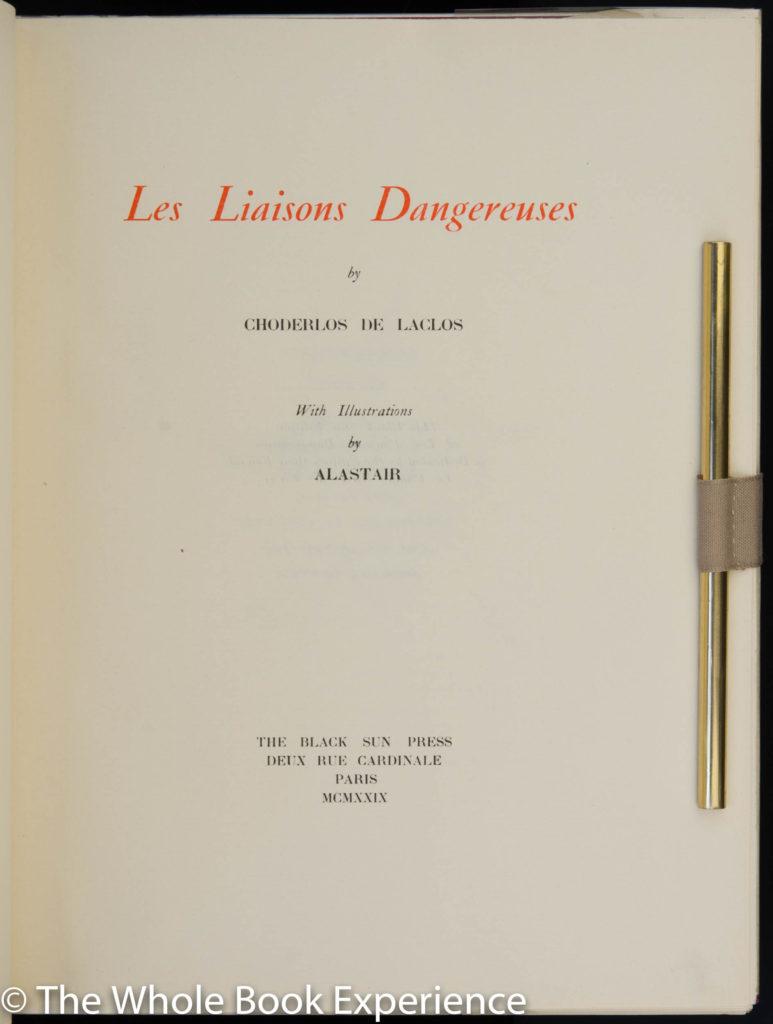
I now have three editions of this book even though I don’t enjoy reading it very much. It’s a curious book in that way. The two main characters are just so creepy and despicable but the writing is so good I didn’t want to stop reading. Despite the fact that I know the story well enough that I could have stopped and still written most of this review. That would defeat the purpose of The Whole Book Experience, which is to try to describe the experience of reading a book in a specific edition.
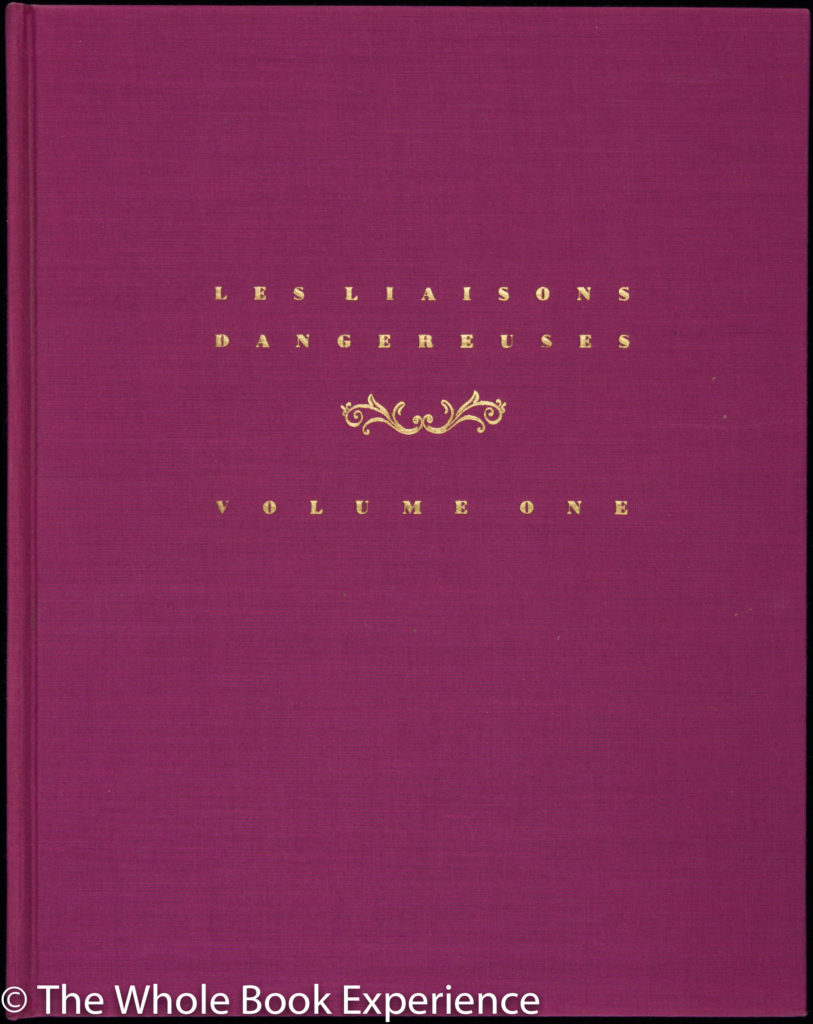
I first experienced Choderlos de Laclos’ masterpiece in the theatre in the ‘80s, where Glenn Close and John Malkovich masterfully acted out the creepiness of the Marquise de Merteuil and the Vicomte de Valmont. The film was uncomfortably great, if my memory serves me. I’m not much for film but have promised my partner, who has never seen it, a movie night now that I have two reads of the novel under my belt. My first read was in the very nice 1979 Folio Society edition, itself a reprint of their 1962 edition. At some point I added the 1940 Nonesuch Press edition, found at a used bookstore at a price and condition too good to pass up. Both of these have very nice illustrations, by Raymond Hawthorn and Chas Laborde, respectively.
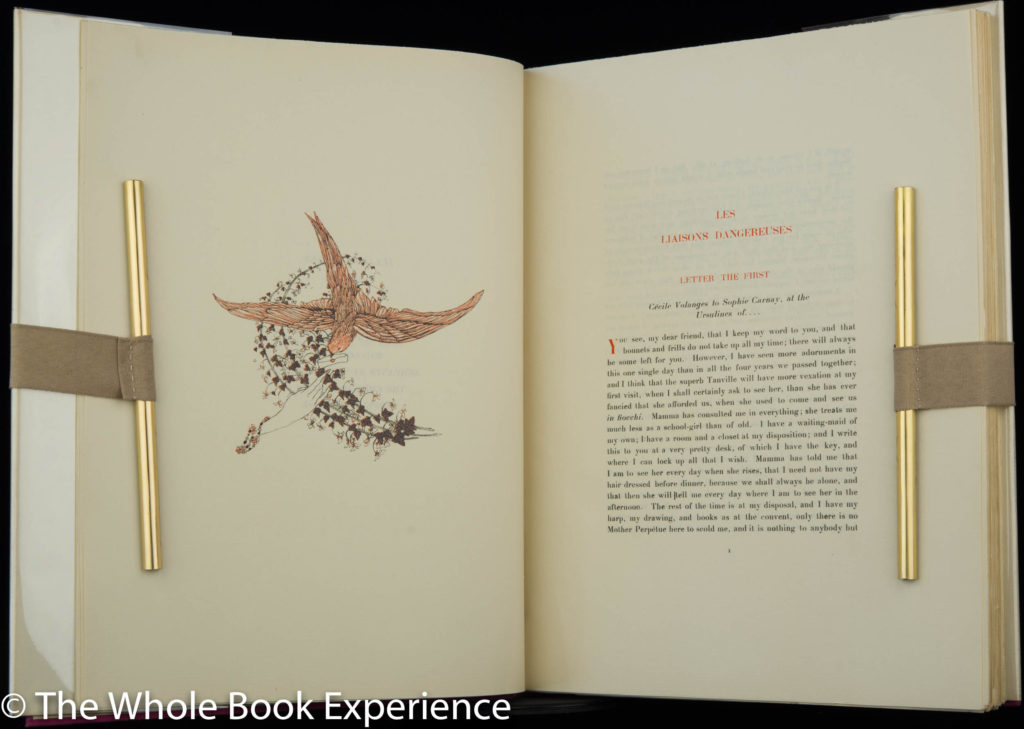
I saw the Black Sun edition at the San Francisco Antiquarian Book Fair when I was in the city for CODEX 2011. The decadence of Alistair’s illustrations seemed to me to be a perfect match for the story. I passed on that particular copy and didn’t see another until I found my copy ten years later. My recollection is that that first copy I saw was paper-wrapped and so I believed that was how they were all bound. The copy I have is hardbound and I was told it was the original binding. The colophon is no help with the binding and I couldn’t find much information on how this state was originally bound.
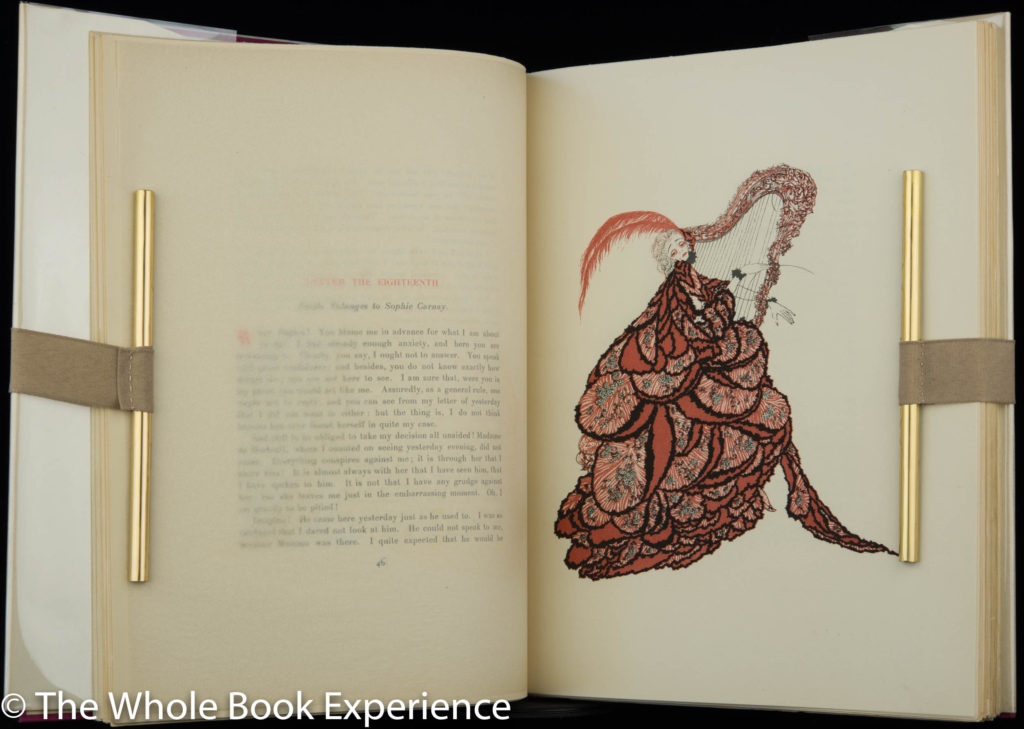
The mystery, idiosyncrasies, and drama of the Black Sun Press itself also makes this book interesting. The press was founded in Paris in 1927 by Caresse and Harry Crosby. I would have to say Caresse seemed to be the main progenitor and impetus behind the press and its legacy, while also having other curious achievements like having one of the earliest patents on the brassiere and being an early producer of and believer in paperback books. Harry contributed for two years before killing himself in a suicide pact with one of his lovers, fittingly in the same year as les liaisons dangereuses came out. Caresse kept the press in operation until she died in 1970, although output was pretty sparse by then. Still, with authors like James Joyce, Hart Crane, Marcel Proust, D.H. Lawrence, Hemingway, and Faulkner in her portfolio, that’s pretty impressive.
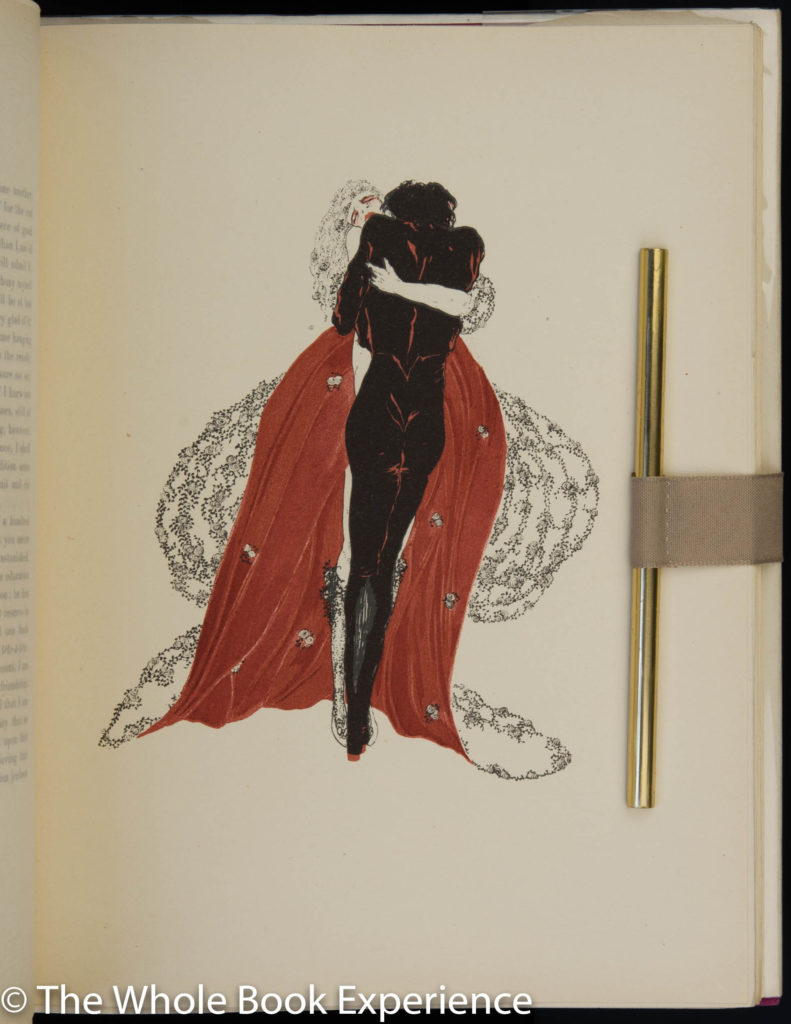
Finally having the Black Sun edition made me enjoy a re-read much more than I might have otherwise. While the Moirans paper isn’t as tactile as some papers, it has a pleasing lined visual aesthetic and a very nice watermark (I have a bit of a watermark fetish along with my tactile love of fine papers). However, the paper is very thin so I had to use great care with my book darts when marking passages and typos. And I used a lot of book darts. Usually I am primarily marking passages I like for one reason or another and want to come back to, or remember, or use in a review, along with a handful of typos. But this edition set a record for the number of typos I’ve ever encountered in a lifetime of reading: 108. In 538 pages. In a modern novel typeset and proofed on a computer this would be inexcusable. It’s a sign of how much I like everything else about this edition that I could tolerate and even be amused as the typo count grew during my reading. There were also occasional vertical lines next to a letter that may have been from worn or uneven type. So I have to say the edition is a far cry from books by a press that Wikipedia describes as having a reputation for producing “typographically flawless editions”.
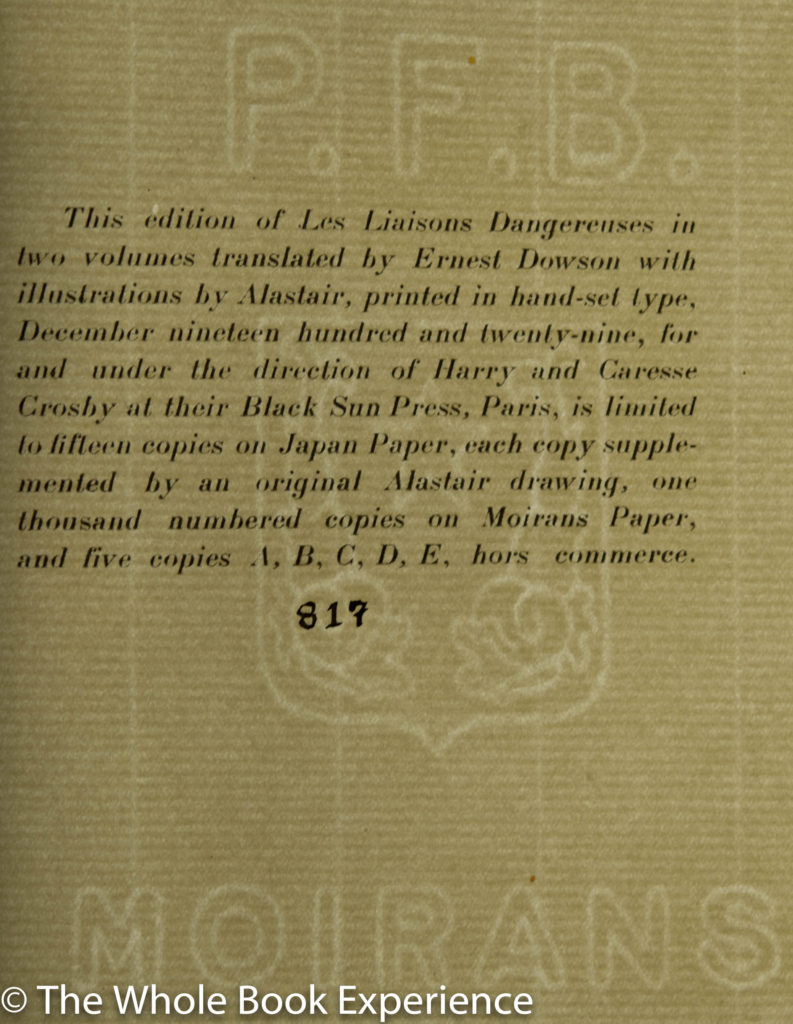
The large page size at 8.5 x 11” allowed for generous margins making it an easy read despite the relatively small font size. Chapter headings and first initials in red were a nice but ironic choice for the “love” story. The binding is a smooth, finely woven purple bookcloth stamped in gold gilt lettering and then paper-wrapped in a dust jacket also printed in two colors.
While there is no supplemental material in the Black Sun edition, there is a lot of insight to be gained into both the book and the author in the Introduction to the Folio Society edition and the Preface to the Nonesuch Press edition, by Richard Adlington and André Gide, respectively. While not much seems to be reliably known about Laclos as a person, Aldington writes that
He belonged to the petite noblesse, the minor ‘gentry’ of France, who were exploited by the ancient régime because they were poor, proud and patriotic and who received their reward under the Revolution too often in the shape of imprisonment and the guillotine.
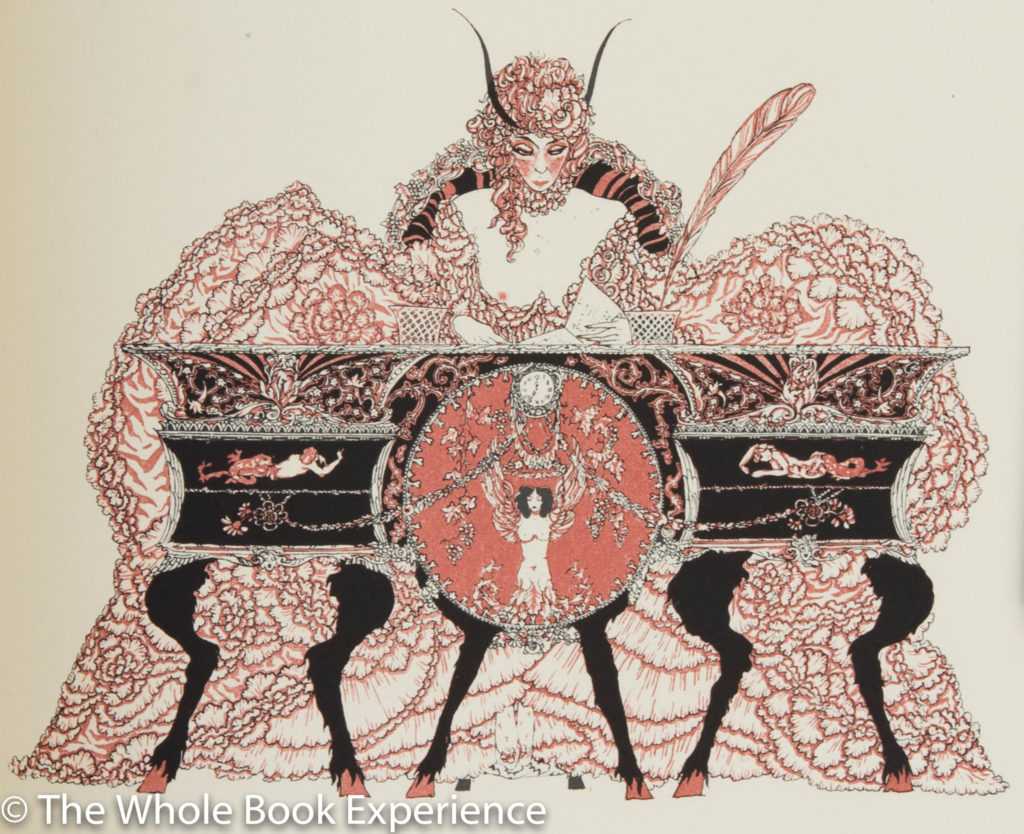
And that les liaisons dangereuses was written during his posting in Aix but was based on his experiences and observances in a previous posting in Grenoble. He writes further that the
… book was the revenge of a disappointed man of genius, fretting against a system which condemned him to obscurity and monotonous routine in a subaltern position.
He was a career military man who adapted to the rapidly changing winds of fortune in France: joining the army before the Revolution, a Freemason, an Orleanist, a republican, a Bonapartist, etc. It’s seems as surprising as if Oliver North wrote one literary book that was good enough to still be read hundreds of years later.
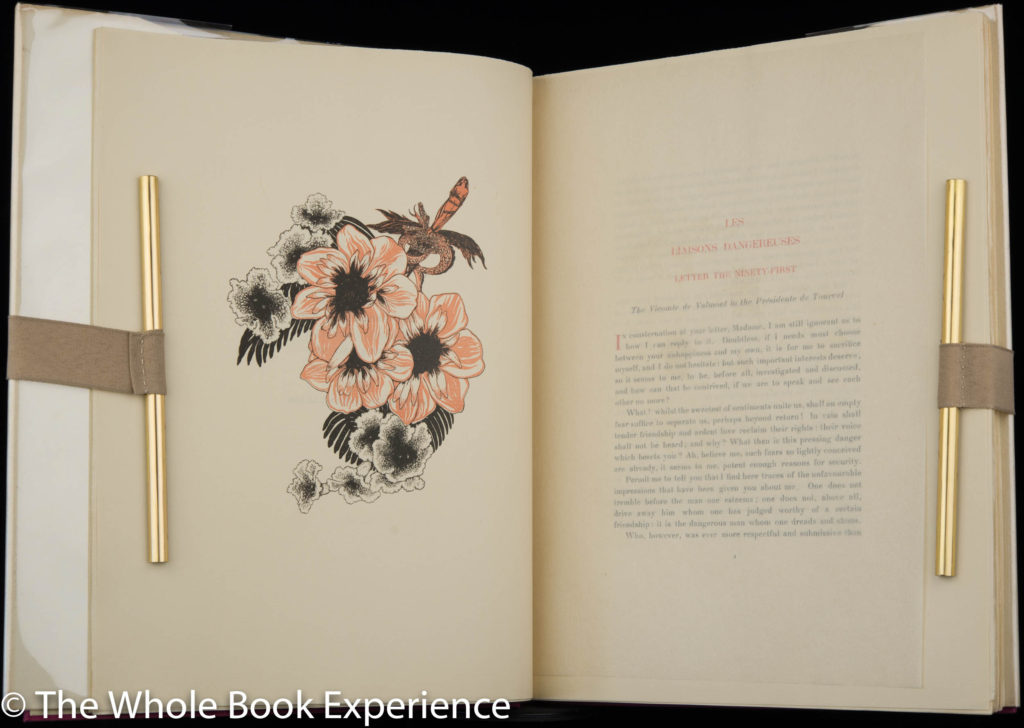
In Gide’s Preface, he makes no bones about what he thinks of the book:
And so, every summer, I read over again a few great books, books sanctified by the admiration of several generations, to find in them, almost always, virtues unseen before. I appreciate them no less than I did at the first reading, though not always for the same reasons as then…I have little use for conventional pieties, and insist on my right to hold nothing as established unless I have first of all put it to the test for myself.
Well, Laclos’ book stands the test. Re-reading it confirms my view of its importance, and convinces me that it well deserves to be held in high esteem.
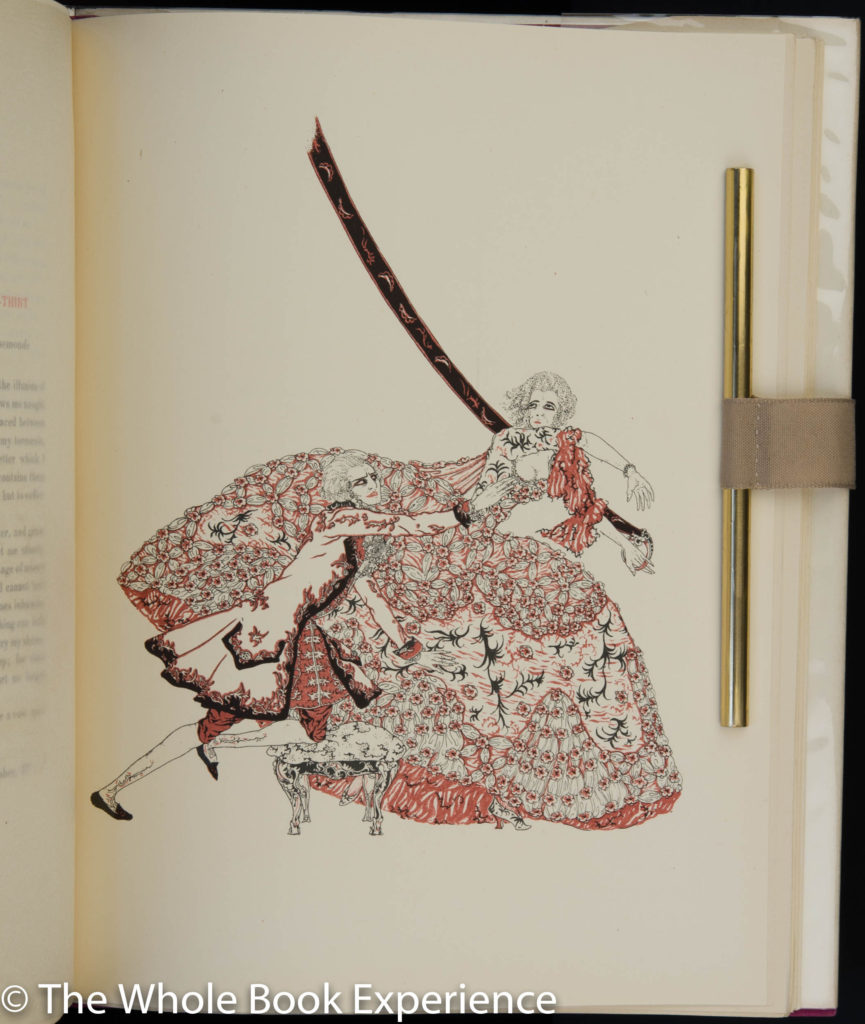
He further makes the observation that
Yet this book, diabolical as its inspiration is, turns out, like every work of profound observation and exact expression, to contain, without the author’s desire, much more instruction on morals than many a well-intentioned treatise.
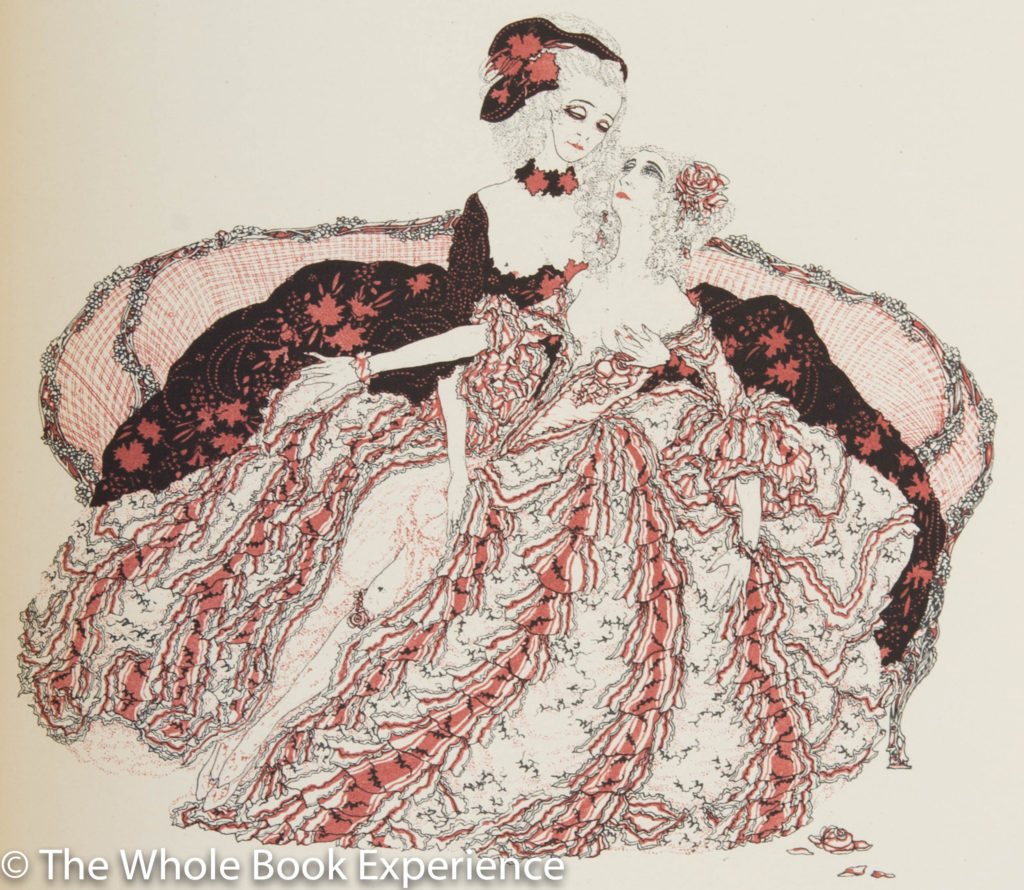
As for my feeling about the novel, especially in this Black Sun edition, I’ll just let a quote from the book sum up my feelings:
“Adieu. I love you nevertheless, just as much as though you were reasonable.”

AVAILABILITY: Good luck and have patience. In the meantime my Nonesuch Press was less than $20 and my Folio Society not much more, I believe.
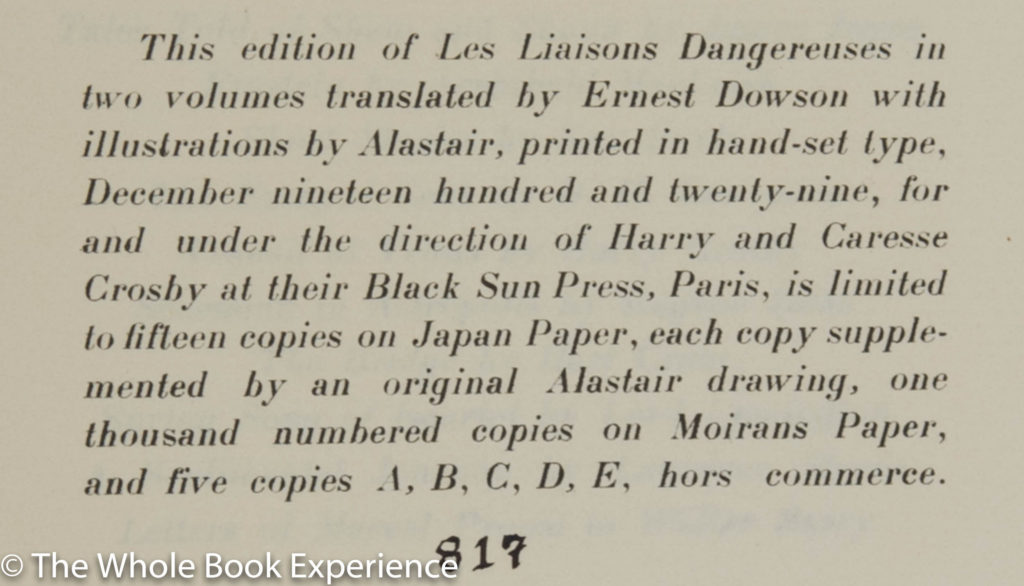
AVAILABILITY: Good luck and have patience. In the meantime my Nonesuch Press was less than $20 and my FS not much more, I believe.
NOTE: Kudos to Natasha Herman and STILT® book cradles! I joined their kickstarter as soon as I heard about it hoping it would make my book photography easier and better. It did. Er, at least it was much easier. Better is very subjective and photographers, like any artists, are never satisfied with their work. I struggle and struggle with the light and getting the paper color true. But at least I could do away with the bean bags, strings, clamps, loose type, and other props I used to use to hold the book! Be sure to check the cradles out whether it is just for display, for photography, or even for reading.
For comparison purposes, here are some photos of some of my favorite things about the Nonesuch Press and Folio Society editions:
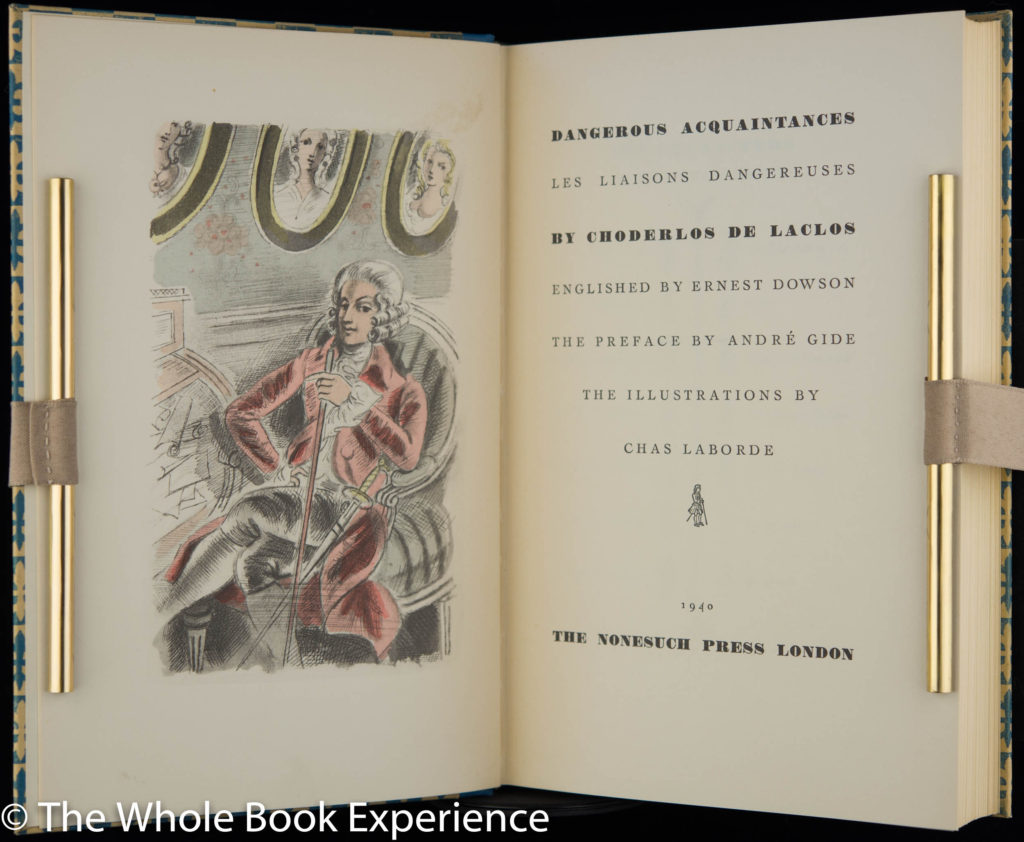
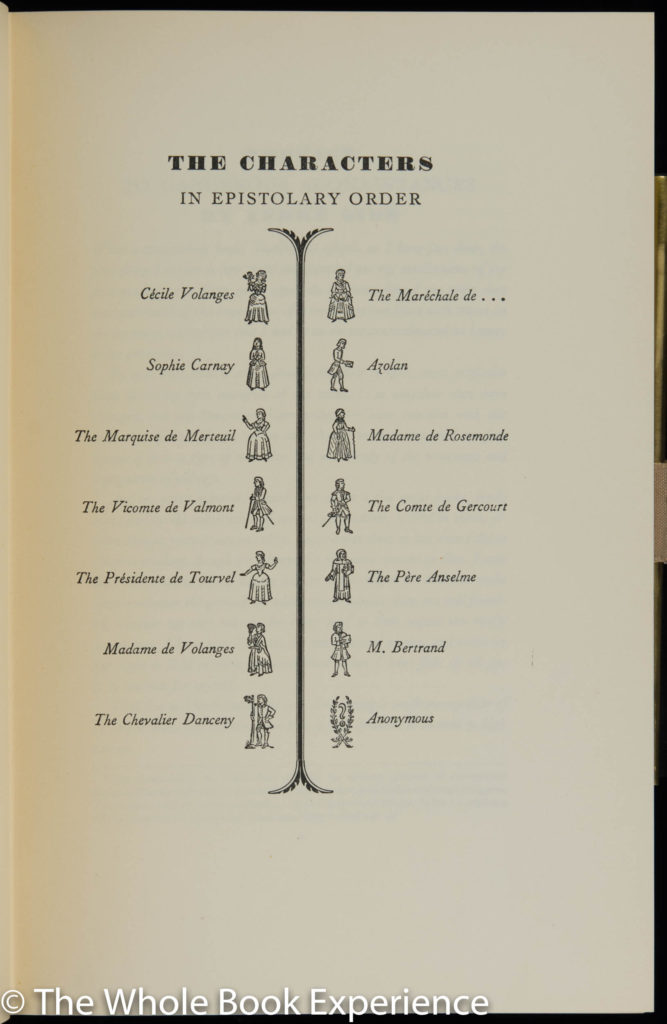
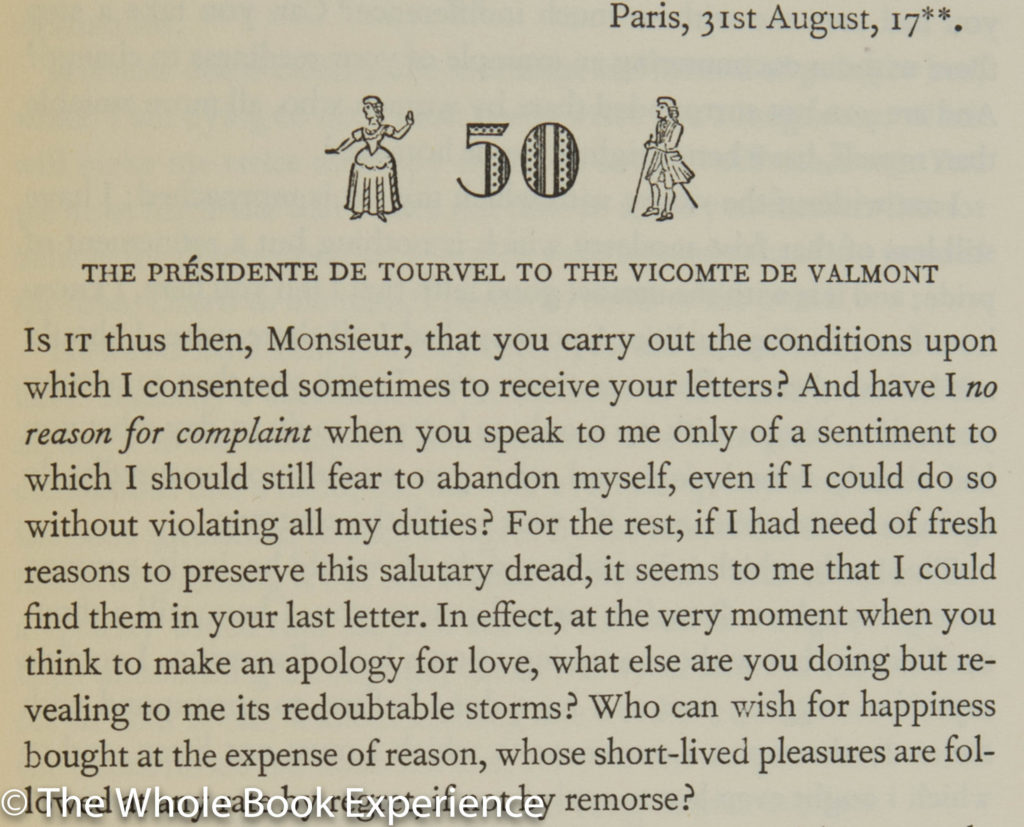

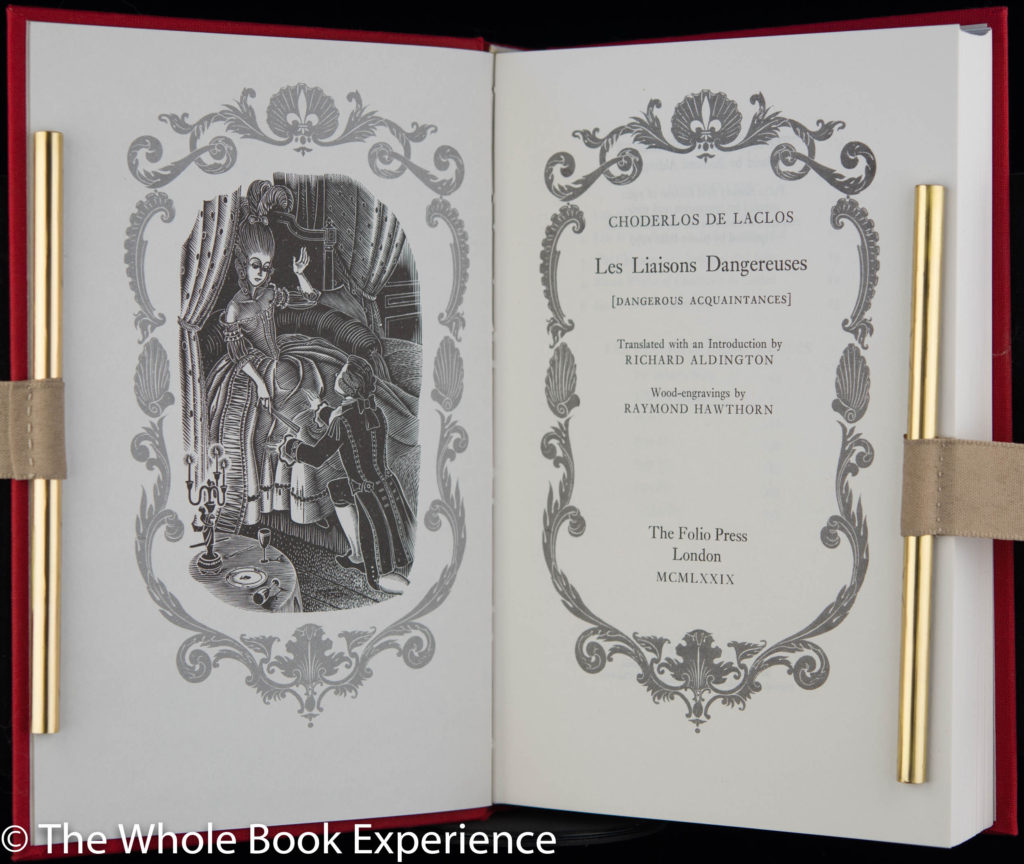
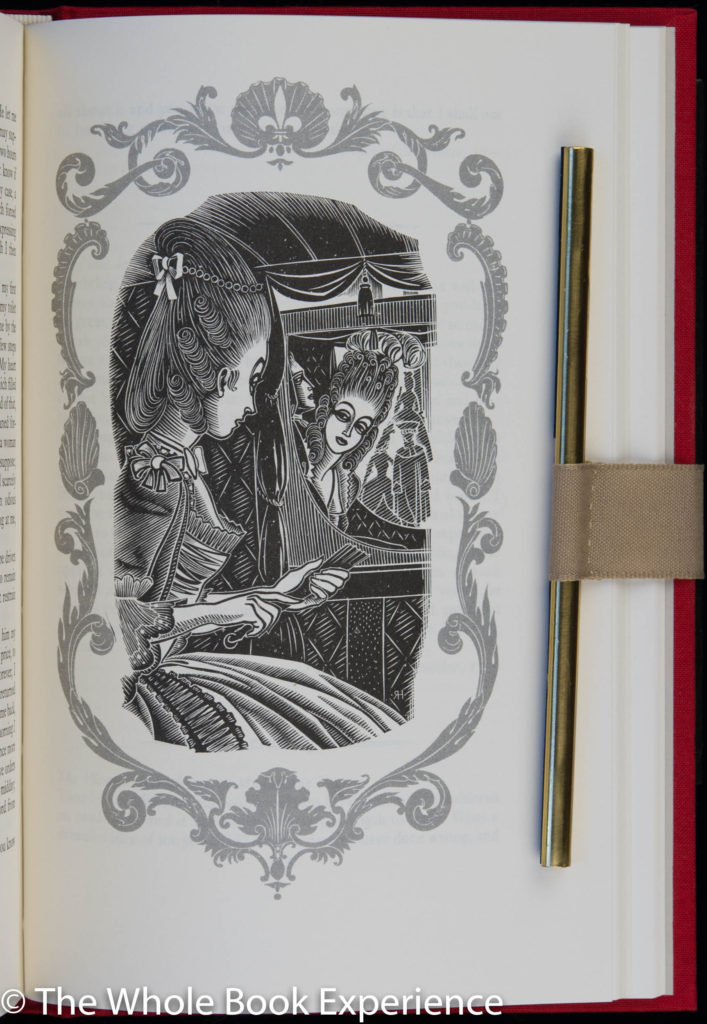

The Folio Society did a later (2007) issue of the work with photo-collage illustrations by Lucy Weller which, despite my aversion to photos used for illustrations, I found rather effective and appropriately decadent. Nice crushed silk binding, too.
I sold it and another edition and kept the Nonesuch for the paper, letterpress, and illustrations.